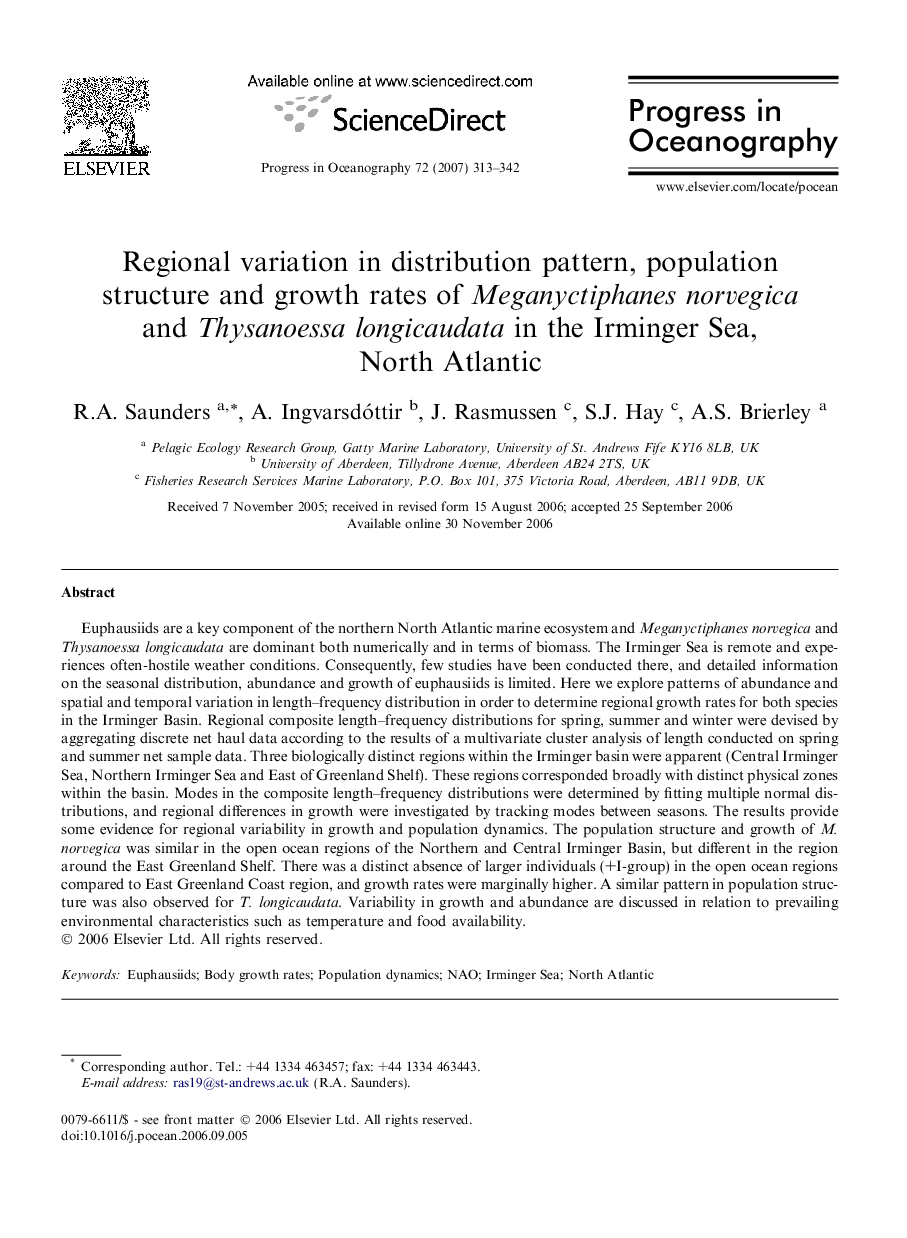| Article ID | Journal | Published Year | Pages | File Type |
|---|---|---|---|---|
| 4553878 | Progress in Oceanography | 2007 | 30 Pages |
Euphausiids are a key component of the northern North Atlantic marine ecosystem and Meganyctiphanes norvegica and Thysanoessa longicaudata are dominant both numerically and in terms of biomass. The Irminger Sea is remote and experiences often-hostile weather conditions. Consequently, few studies have been conducted there, and detailed information on the seasonal distribution, abundance and growth of euphausiids is limited. Here we explore patterns of abundance and spatial and temporal variation in length–frequency distribution in order to determine regional growth rates for both species in the Irminger Basin. Regional composite length–frequency distributions for spring, summer and winter were devised by aggregating discrete net haul data according to the results of a multivariate cluster analysis of length conducted on spring and summer net sample data. Three biologically distinct regions within the Irminger basin were apparent (Central Irminger Sea, Northern Irminger Sea and East of Greenland Shelf). These regions corresponded broadly with distinct physical zones within the basin. Modes in the composite length–frequency distributions were determined by fitting multiple normal distributions, and regional differences in growth were investigated by tracking modes between seasons. The results provide some evidence for regional variability in growth and population dynamics. The population structure and growth of M. norvegica was similar in the open ocean regions of the Northern and Central Irminger Basin, but different in the region around the East Greenland Shelf. There was a distinct absence of larger individuals (+I-group) in the open ocean regions compared to East Greenland Coast region, and growth rates were marginally higher. A similar pattern in population structure was also observed for T. longicaudata. Variability in growth and abundance are discussed in relation to prevailing environmental characteristics such as temperature and food availability.
